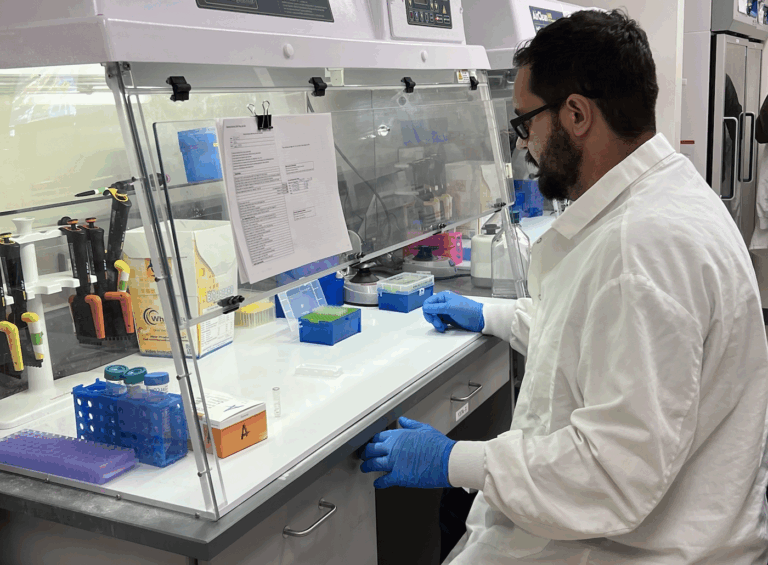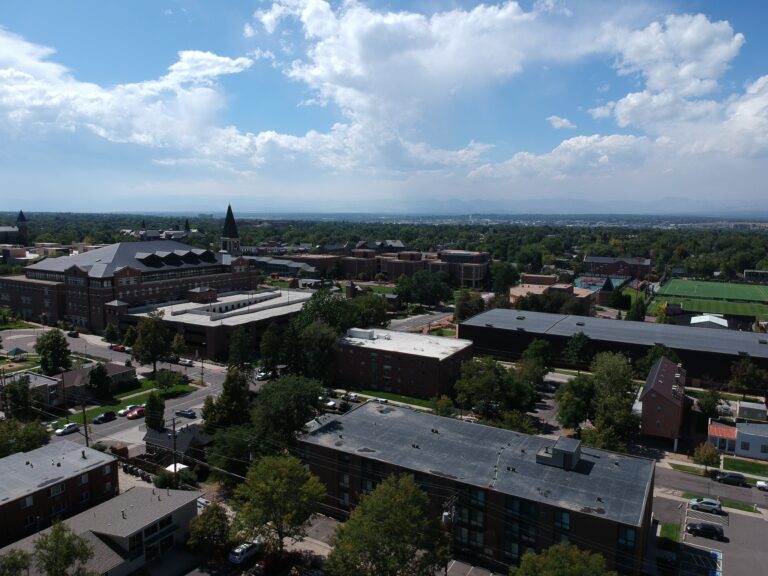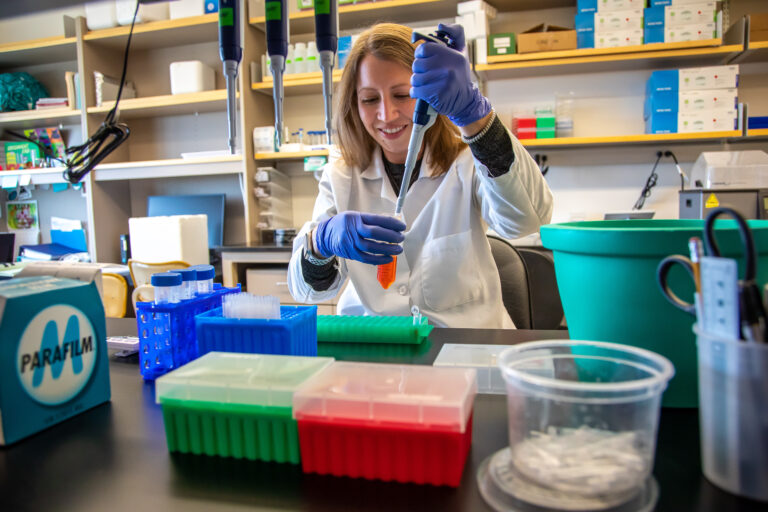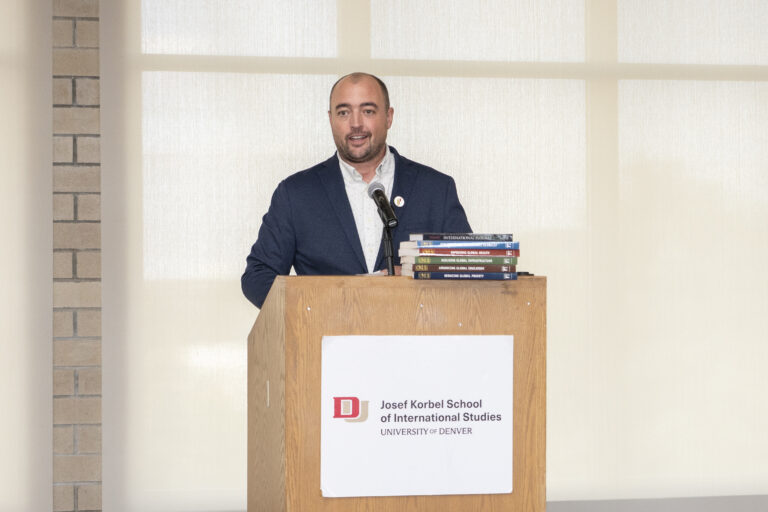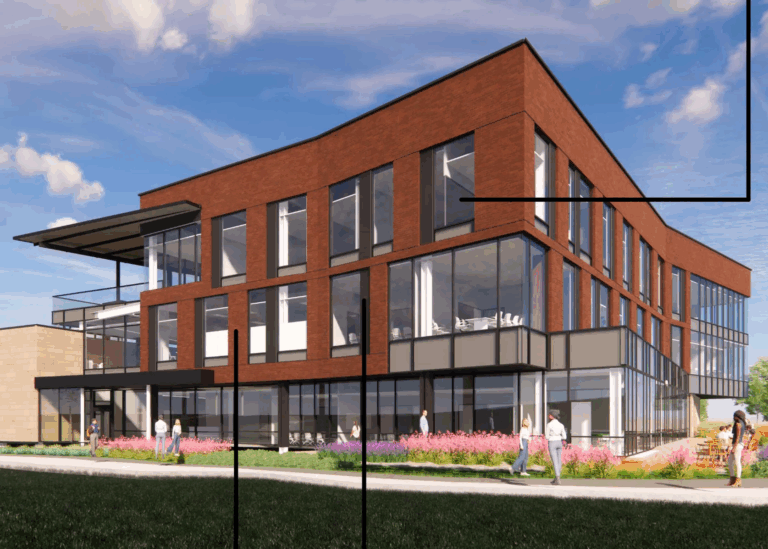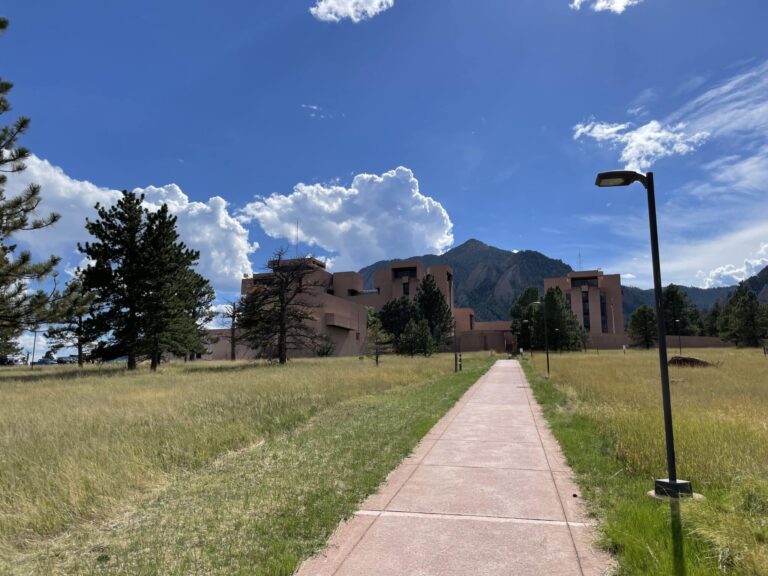Researchers from the University of Denver and National Jewish Health have teamed up to study how pollutants move around the Denver metro area and develop better forecasting models and more-actionable warning systems.
A collaborative microgrant initiative launched by DU and National Jewish in 2021 funded the research. Grants of $7,000 to $10,000 were awarded to five teams, including the team of Jing Li, an associate professor at DU, and Dr. James Crooks of National Jewish on the air-quality research project.
Li is a geospatial scientist whose research focus expanded from climate change to health issues during the early days of the COVID-19 pandemic. “I was interested in looking at human mobility and how human mobility contributes to the spread of COVID,” she explained. “That was how I got interested in the medical side of geospatial analytics.”
The COVID-19 research led Li to pursue further collaborations with National Jewish. “I reached out and asked if they were interested in working with me looking at air-quality issues, because that’s one important factor that contributed to the spread of COVID as well,” she said.
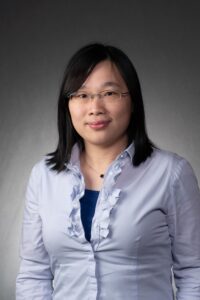
The microgrant program sprung from a long relationship between the two institutions. “We’ve been working with DU for the better part of 15 years, and there’s been a huge amount of goodwill and and a few projects that we’ve been able to do and complete together,” said Dr. Gregory Downey, executive vice president of academic affairs, provost, and professor of medicine and immunology and genomic medicine at National Jewish Health.
“I think that we have a lot of complementary interests and programs,” he added. “We [National Jewish] can bring the more biological sciences and medical aspects to research projects, and they can bring some of the physical and computational aspects as well as some of the social sciences. So I think it’s a very good collaboration. When we work together, we’re not competing.”
Downey said he sees the microgrant program as a “catalyst” for projects to win additional funding from outside organizations like the National Institutes of Health.
Much of the data for Li’s and Crooks’ research comes from a network of low-cost air sensors across Denver that was funded by a $1 million grant from the Bloomberg Mayors Challenge. Li’s team integrated that data with the traditional air-quality data from the Environmental Protection Agency.
“Every few minutes, we get an observation of air quality,” Li said. “We are able to do our quality modeling and extremely high temporal frequency, which is more important, because we want to see the changes of air quality pretty quickly.”
In 2023, Li and Crooks published an article in the journal, Science of The Total Environment, on the use of machine learning to make predictions on the concentration of particulate matter that is 2.5 microns in diameter or smaller (PM2.5) using observations from sensors.
Most predictive air-quality models rely on a single monitoring network consisting of sparsely distributed sensors, but Li’s team leveraged multiple sensor networks for short-term PM2.5 prediction. The 2023 publication showcased a machine learning approach to predict ambient PM2.5 concentration levels at any unmonitored location several hours ahead with observations from two sensor networks and the location’s properties.
Li said the status quo for PM2.5 forecasting in a given area is based on a single daily observation. “That’s not useful,” she noted. “We want to see how air-quality changes over a period of time. We can use that kind of information to help respond to potential exposure to PM2.5 for example.”
The paper in Science of The Total Environment found that certain geographic areas saw higher PM2.5 levels than others. “We actually found some elementary schools, especially the Adventure School in the north part of Denver, are more likely to be impacted by PM2.5 because they’re in the traditional industrial zone,” Li said.
The Hispanic-dominant communities on the north side of the city were also disproportionately affected by high PM2.5 levels. “We have environmental equity issues in those communities, in addition to the air quality issues,” Li said.
Another key finding of the research identified a daily cycle of changing PM2.5 pollution levels throughout the city, with higher concentration levels in the middle of the day. That illuminates the need for a more-robust warning system to help people with respiratory issues avoid outdoors when pollution is high, Li said.
“We want to send out hourly air quality warnings throughout the day so we can better guide our residents, especially for those who are in the high-risk population,” she said. “We can have some kind of online platform so you can go to a website and provide some kind of activity information. We can generate real-time predictions of your exposure level based on the air-quality information we have.”
The PM2.5 analysis is just the beginning of Li’s geospatial analysis of air pollutants in Denver and their impact on residents’ health. In 2023, she worked with a graduate student to produce another machine learning-based model for ozone. “Ozone is somewhat unique in Colorado,” Li said. “Because Colorado has a pretty high altitude, the ozone level is pretty high compared to the rest of the country.”
Li is also working with another professor from National Jewish Health on personalized exposure assessments of Denver residents by analyzing “their exposure level to different types of pollutants, and how that exposure can have an impact on people’s health.”
National Jewish researchers are also “very interested in NOx gas types” such as nitric oxide and nitrogen dioxide, added Li, but collecting data is challenging. “We probably only have less than 10 sensors in Denver to cover the whole metro area,” she said.
Deploying more sensors, including low-cost units from Utah-based PurpleAir, would help fill that void, she noted. “In my case, I don’t go out to collect data, I rely on data from government agencies or local initiatives to look at and then do modeling,” said Li. “Methodology-wise, we are always limited by the type of data we can get. If we can get more data sets even from local sensors where the data quality is not as good as traditional sensors, we still can use it to do some trend analysis.”
